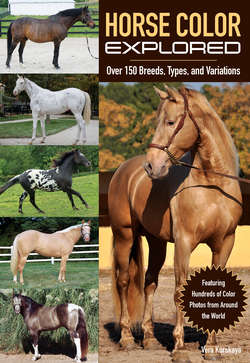Читать книгу Horse Economics - Vera Kurskaya - Страница 37
На сайте Литреса книга снята с продажи.
Inheritance of Colors Determined by the Dun Gene
ОглавлениеThe dun colors are controlled by a dominant allele of the Dun gene (abbreviated as Dn+). This allele is considered the “Wild” version of the gene, while its mutant form (nd2, which means non-dun2) in a homozygous state defines the usual, ordinary non-dun colors. The result of its action is dilution of eumelanin, resulting in bluish or ashy hair color, and pheomelanin, resulting in light red, apricot, or pale caramel. However, the mane, tail, head, and lower part of the legs are diluted to a lesser degree, which may indicate the involvement of a temperature-sensitive biochemical mechanism. An integral part of the action of the Dun allele is the manifestation of primitive markings, and these have an unclear mechanism of formation.
According to a hypothesis made by Nancy Castle (2008), primitive markings are created in all horses during embryogenesis. However in color-diluted horses carrying the Dun gene, the markings are visible, whereas in non-Dun-gene horses—due to a darker background—these markings are invisible. Castle bases her theory on the fact that you can observe primitive markings in foals that disappear as the animal ages. In general, the color of a horse darkens with maturity, and it is possible that primitive markings remain present. In support of this hypothesis is the presence of such markings on adult horses that are not dun. Such horses are called false duns (see p. 78). The specific mutation of the Dun gene responsible is abbreviated “nd1” (non-dun1). There is a DNA test for the Dun gene. The hierarchy is Dn+ > nd1 > nd2.
Table 4.
| Primary Color | Dn+ |
|---|---|
| Bay | Bay Dun |
| Black | Grullo |
| Seal Brown | Brown Dun |
| Chestnut | Red Dun |
| Buckskin | Dunskin |
| Palomino | Dunalino |
